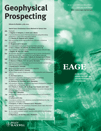
GEOPHYSICAL PROSPECTING
Scope & Guideline
Pioneering Insights into Earth's Structure and Processes
Introduction
Aims and Scopes
- Geophysical Data Acquisition and Processing:
The journal emphasizes the development and refinement of techniques for acquiring and processing geophysical data, including seismic, electromagnetic, and resistivity methods. This includes innovations in data collection strategies and algorithms for noise reduction and signal enhancement. - Reservoir Characterization and Modeling:
A core focus area is the characterization of subsurface reservoirs, including oil, gas, and mineral deposits. This involves employing advanced modeling techniques such as full-waveform inversion and machine learning to improve the accuracy of reservoir predictions. - Machine Learning and Artificial Intelligence Applications:
The integration of machine learning and AI methodologies into geophysical studies is increasingly prominent. This includes applications for data interpretation, anomaly detection, and predictive modeling, reflecting the journal's commitment to modern computational techniques. - Rock Physics and Material Properties:
Research on the physical properties of geological materials and their implications for geophysical methods is a consistent theme. This includes studies on elastic properties, porosity, and saturation effects, which are critical for accurate subsurface modeling. - Environmental and Geotechnical Applications:
The journal also addresses geophysical methods applied to environmental and geotechnical investigations, emphasizing the role of geophysics in understanding subsurface conditions for engineering and environmental management. - Innovative Inversion Techniques:
There is a strong emphasis on the development of inversion techniques that enhance the interpretation of geophysical data. This includes Bayesian approaches, regularization methods, and the integration of multi-physics data.
Trending and Emerging
- Deep Learning and AI in Geophysics:
There is a significant increase in research utilizing deep learning and artificial intelligence for data processing, interpretation, and modeling. This trend highlights the growing importance of computational techniques in enhancing geophysical analysis. - Time-Lapse Monitoring and Environmental Applications:
Emerging themes include time-lapse monitoring techniques, particularly in the context of environmental studies and reservoir management. This reflects a heightened focus on understanding temporal changes in subsurface conditions. - Integrated Geophysical Methods:
A trend towards integrating various geophysical methods (e.g., combining seismic, electromagnetic, and resistivity data) is becoming more prevalent, allowing for more comprehensive subsurface characterization. - Sustainable Energy and CO2 Storage Applications:
Research related to subsurface storage of CO2 and other sustainable energy practices is gaining traction, reflecting global priorities in climate change mitigation and energy transition. - Advanced Inversion and Modeling Techniques:
There is a noticeable increase in papers focusing on advanced inversion methods that combine different data types and utilize sophisticated algorithms, indicating a push towards more accurate and efficient modeling of subsurface features.
Declining or Waning
- Traditional Geophysical Methods:
There has been a noticeable decrease in the publication of papers focused solely on traditional geophysical methods without the integration of modern technologies or computational approaches, suggesting a shift towards more innovative and hybrid techniques. - Basic Field Studies:
Papers centered on basic observational field studies without substantial methodological advancements or theoretical contributions are becoming less frequent, indicating a trend towards more applied and technologically sophisticated research. - Geophysical Theory Without Practical Application:
Research that primarily focuses on theoretical aspects of geophysics without clear applications or implications for real-world problems is declining, reflecting a preference for studies that bridge theory with practical outcomes.
Similar Journals

BOLETIN GEOLOGICO Y MINERO
Uncovering Earth's Secrets, One Study at a TimeBOLETIN GEOLOGICO Y MINERO is a significant academic journal published by the Instituto Geológico Minero de España, focusing on the fields of Geology and Geochemistry. Established in 1980, this journal provides a platform for researchers to disseminate vital studies and findings in the earth sciences, encompassing an array of topics from mineralogy to environmental geology. Despite its Q4 ranking in both Geochemistry and Petrology and Geology categories as of 2023, the journal serves as a resource for emerging research and innovative methodologies in these critical fields, promoting a deeper understanding of geological processes and materials. While currently operating without an open-access model, the journal is committed to advancing knowledge through rigorous peer-review standards. With its roots in Spain, the BOLETIN GEOLOGICO Y MINERO significantly contributes to the European geological research community and remains an invaluable resource for students, professionals, and researchers alike engaged in the pursuit of geological science.

Geofizicheskiy Zhurnal-Geophysical Journal
Fostering Collaboration in Earth Surface DynamicsGeofizicheskiy Zhurnal-Geophysical Journal, published by the esteemed S I Subbotin Institute of Geophysics, National Academy of Sciences of Ukraine, stands as a vital resource for professionals and researchers in the field of geophysics. With an ISSN of 0203-3100 and an E-ISSN of 2524-1052, this journal is recognized for its rigorous peer-reviewed articles that delve into various aspects of geophysical research, including seismic studies, geodynamics, and Earth surface processes. Although currently not under an open access model, the journal maintains a commitment to disseminating high-quality research, thereby enriching the global geophysical community. The publication aims to foster collaboration and knowledge transfer among scientists and engineers while addressing complex geophysical challenges in a rapidly evolving landscape. By engaging with cutting-edge research, readers can expect to uncover insights that advance both theoretical understanding and practical applications in geophysical science.
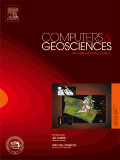
COMPUTERS & GEOSCIENCES
Advancing the Frontier of Computational GeosciencesCOMPUTERS & GEOSCIENCES, published by PERGAMON-ELSEVIER SCIENCE LTD, is a prestigious academic journal that delivers cutting-edge research at the intersection of computational techniques and geosciences. With an ISSN of 0098-3004 and an E-ISSN of 1873-7803, this journal has been contributing significantly to the field since its inception in 1975 and continues to attract noteworthy articles through 2024. Recognized as a Q1 journal in both the categories of Computers in Earth Sciences and Information Systems, it ranks within the top 12% and 17% of its respective fields according to Scopus. The journal emphasizes innovative applications of computer science in geoscience, providing a platform for researchers to share their findings, methodologies, and advancements. Researchers, professionals, and students dedicated to exploring the computational facets of environmental studies will find this journal to be an invaluable resource.

GEOPHYSICAL JOURNAL INTERNATIONAL
Innovating Understanding of Geophysical PhenomenaGEOPHYSICAL JOURNAL INTERNATIONAL, published by the esteemed Oxford University Press, stands as a premier platform for advancing research in the realms of Geophysics and Geochemistry. With a rich history spanning from 1922 to 2024, this journal not only adheres to the highest scholarly standards but has also achieved remarkable recognition, evidenced by its impressive ranking in the Scopus database—#32 in Geophysics and #48 in Geochemistry and Petrology, placing it within the top quartiles of its field. Researchers and professionals will appreciate its comprehensive scope and commitment to disseminating vital research findings, which significantly contribute to our understanding of the Earth's processes. Although it does not offer open access, the journal's Q1 quartile status underscores its influence and importance in shaping contemporary scientific discourse. Whether you are a seasoned researcher or a budding student, GEOPHYSICAL JOURNAL INTERNATIONAL is an indispensable resource for essential knowledge and groundbreaking studies in the geophysical sciences.

Acta Geophysica
Pioneering Research for a Deeper Understanding of Earth.Acta Geophysica is a distinguished peer-reviewed journal published by Springer International Publishing AG, focusing on the dynamic field of Geophysics. With an ISSN of 1895-6572 and an E-ISSN of 1895-7455, this journal stands as a critical platform for disseminating cutting-edge research and advancements from 2006 to 2024. Acta Geophysica maintains a respectable impact factor, reflecting its contribution to the global scientific community, where it ranks in the Q2 category within Geophysics, and is positioned 55 out of 165 in Scopus' Earth and Planetary Sciences, placing it in the 66th percentile. Based in Switzerland, the journal invites submissions that address a diverse range of topics, including seismic studies, geodynamics, and climate change impacts, thereby fostering in-depth discussions and innovative solutions in geophysical research. Access to the journal's content is offered through subscription-based options, ensuring a sustainable model for high-quality scientific exchange. By connecting researchers, professionals, and students, Acta Geophysica plays a vital role in advancing the understanding of Earth's processes and contributing to the field's evolution.
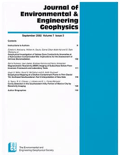
JOURNAL OF ENVIRONMENTAL AND ENGINEERING GEOPHYSICS
Innovating Solutions at the Intersection of Earth and EngineeringJOURNAL OF ENVIRONMENTAL AND ENGINEERING GEOPHYSICS, published by the ENVIRONMENTAL ENGINEERING GEOPHYSICAL SOC, serves as an essential platform for the dissemination of cutting-edge research in the interconnected fields of environmental engineering, geophysics, and geotechnical engineering. This journal, with the ISSN 1083-1363 and E-ISSN 1943-2658, boasts a solid reputation, reflected in its Q3 rankings in several categories as of 2023. As it converged from 2001 to 2024, the journal has evolved to meet the increasing demand for innovative solutions to contemporary environmental challenges. Researchers are encouraged to submit original articles that contribute meaningfully to our understanding of the subsurface environment and its engineering implications. The journal is indexed in Scopus, with commendable rankings including 72nd out of 165 in Geophysics, highlighting its role in advancing knowledge and application in Earth and Planetary Sciences. Although not an open access journal, subscribers and institutions alike recognize the value of its rigorous peer-reviewed content, ensuring that professionals and scholars are equipped with the latest findings and methodologies in this dynamic field.
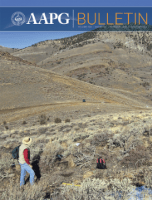
AAPG BULLETIN
Advancing Earth Sciences and Energy Engineering.AAPG BULLETIN, published by the American Association of Petroleum Geologists, stands as a premier journal in the fields of Earth Sciences and Energy Engineering. With an impressive history spanning from 1968 to 2023, the journal has established itself as a valuable resource for researchers and professionals alike, focusing on a wide array of topics including geology, geochemistry, petrology, and fuel technology. Its robust standing in the academic community is reflected in its recognition as a Q1 journal across multiple categories such as Earth and Planetary Sciences, Energy Engineering, and Geology, with notable rankings in prestigious databases like Scopus. Although not an open-access journal, the AAPG BULLETIN provides vital insights and studies that advance our understanding of Earth processes and energy resources. It serves as an essential platform for disseminating cutting-edge research, fostering collaboration, and inspiring the next generation of scientists and engineers in the pursuit of sustainable energy solutions.
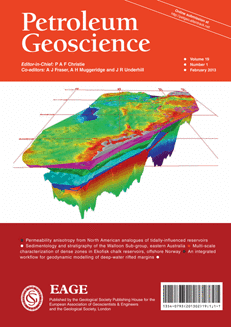
PETROLEUM GEOSCIENCE
Transforming Ideas into Impactful Petroleum SciencePETROLEUM GEOSCIENCE is a prestigious journal published by the GEOLOGICAL SOCIETY PUBLISHING HOUSE, catering to the dynamic field of geosciences with a particular focus on petroleum exploration and production. With its ISSN 1354-0793 and E-ISSN 2041-496X, this essential academic resource has been at the forefront of research since its inception in 1995, and is set to continue leading through 2024. The journal has distinguished itself with impressive rankings, achieving Q1 statuses in categories such as Earth and Planetary Sciences (miscellaneous) and Geology, and Q2 placements in Economic Geology, Fuel Technology, and Geochemistry and Petrology for the year 2023. With high recognitions in Scopus rankings, including a 79th percentile in Earth and Planetary Sciences (Geology), it is an invaluable platform for researchers and professionals seeking to share their findings and stay updated on industry advancements. Although not an open-access journal, its rigorous peer-review process ensures that published articles contribute significantly to the ongoing discourse in petroleum geosciences, fostering knowledge exchange and innovation in the field. Researchers from across the globe consider this journal a vital venue for their work, enhancing its reputation and importance in the academic landscape.

Geophysics and Geophysical Exploration
Transforming Geophysical Understanding for a Sustainable FutureGeophysics and Geophysical Exploration is a prestigious journal dedicated to advancing the fields of geophysics and geophysical exploration. Published by the Korean Society of Earth & Exploration Geophysicists, this journal serves as a vital platform for researchers, professionals, and students to share innovative findings and developments in geophysical methods and technologies. The journal covers a broad range of topics including but not limited to seismic analysis, subsurface modeling, and remote sensing techniques, aimed at addressing the complex challenges in Earth science exploration. Although it does not currently offer open access options, the journal maintains rigorous peer-review standards, ensuring high-quality and impactful research contributions. With its commitment to fostering knowledge exchange in the geophysical community, Geophysics and Geophysical Exploration plays a critical role in enhancing our understanding of the Earth, making it an essential resource for those interested in geoscience and related fields.

Riset Geologi dan Pertambangan
Championing open access to vital geological research.Riset Geologi dan Pertambangan is an esteemed open-access journal published by the Indonesian Institute of Sciences, R&D Centre Biology, dedicated to advancing research in the fields of geology and mining. With an ISSN of 0125-9849 and an E-ISSN of 2354-6638, this journal has been fostering the dissemination of knowledge since 2005, ensuring that critical findings are accessible to a global audience. The journal serves as an important platform for researchers, professionals, and students to share innovative research, methodologies, and case studies that contribute to sustainable mining practices and geological advancements. By promoting interdisciplinary collaboration and the latest developments in the field, Riset Geologi dan Pertambangan plays a vital role in shaping the future of geology and mining research, particularly within the Southeast Asian context.